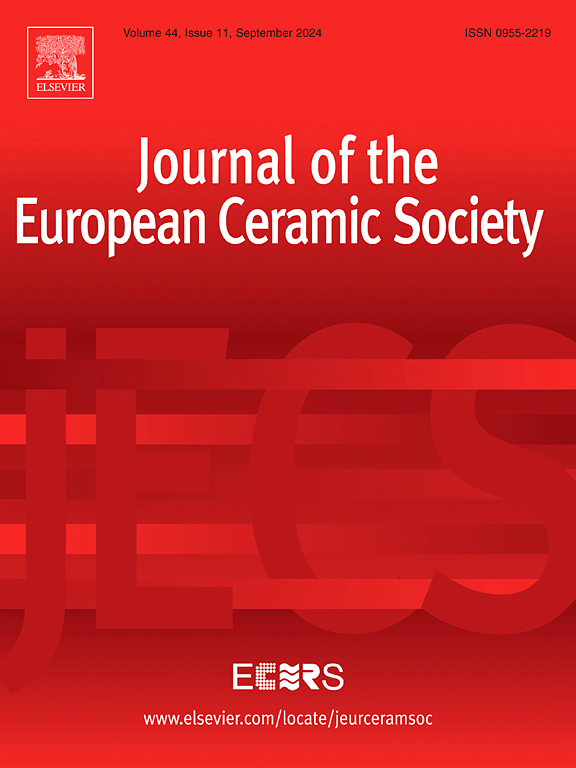The impact of SrTiO3, CaTiO3 and BaTiO3 on the formation of core-shell structures in solid solutions with Na0.5Bi0.5TiO3
IF 5.8
2区 材料科学
Q1 MATERIALS SCIENCE, CERAMICS
Journal of The European Ceramic Society
Pub Date : 2025-06-03
DOI:10.1016/j.jeurceramsoc.2025.117588
引用次数: 0
Abstract
The solid solution 75Na0.5Bi0.5TiO3-25SrTiO3 (NBT-ST) can achieve outstanding high-strain properties for actuator applications. Whether these properties arise from microscopic core-shell structures or coexisting polar nanoregions remains uncertain, thus opening up a promising research field for tuning functional properties. One possible way to reveal the underlying core-shell formation mechanism and the structure’s impact on functional properties is to test related solid solutions with NBT. This study examines the applicability of core-shell formation conditions and associated property changes in NBT-ST to 87Na0.5Bi0.5TiO3 −13CaTiO3 (NBT-CT) and 94Na0.5Bi0.5TiO3–6BaTiO3 (NBT-BT). Thermal analysis and scanning electron microscopy revealed that two-step reactions, as in NBT-ST and NBT-CT, are the key factor enabling core-shell structures. A single-step reaction, like in NBT-BT resulted in no core-shell structures. As already demonstrated for NBT-ST, core-shell structures in NBT-CT led to comparably high strains of 0.29 % and slim polarisation loops, confirming the transferability of property changes associated with chemical inhomogeneities.
SrTiO3、CaTiO3和BaTiO3对Na0.5Bi0.5TiO3固溶体中核壳结构形成的影响
固溶体75Na0.5Bi0.5TiO3-25SrTiO3 (NBT-ST)可以实现执行器应用的出色高应变性能。这些性质是由微观核壳结构还是共存的极性纳米区引起的尚不确定,从而为调节功能性质开辟了一个有前途的研究领域。揭示核壳形成机制和结构对功能特性影响的一种可能方法是用NBT测试相关的固溶体。本研究考察了NBT-ST核壳形成条件和相关性质变化对87Na0.5Bi0.5TiO3−13CaTiO3 (NBT-CT)和94Na0.5Bi0.5TiO3-6BaTiO3 (NBT-BT)的适用性。热分析和扫描电镜显示,NBT-ST和NBT-CT中的两步反应是形成核壳结构的关键因素。像NBT-BT这样的单步反应不会产生核壳结构。正如NBT-ST已经证明的那样,NBT-CT的核壳结构导致了0.29 %的相对较高的菌株和较细的极化环,证实了与化学不均匀性相关的性质变化的可转移性。
本文章由计算机程序翻译,如有差异,请以英文原文为准。
求助全文
约1分钟内获得全文
求助全文
来源期刊

Journal of The European Ceramic Society
工程技术-材料科学:硅酸盐
CiteScore
10.70
自引率
12.30%
发文量
863
审稿时长
35 days
期刊介绍:
The Journal of the European Ceramic Society publishes the results of original research and reviews relating to ceramic materials. Papers of either an experimental or theoretical character will be welcomed on a fully international basis. The emphasis is on novel generic science concerning the relationships between processing, microstructure and properties of polycrystalline ceramics consolidated at high temperature. Papers may relate to any of the conventional categories of ceramic: structural, functional, traditional or composite. The central objective is to sustain a high standard of research quality by means of appropriate reviewing procedures.
 求助内容:
求助内容: 应助结果提醒方式:
应助结果提醒方式:


